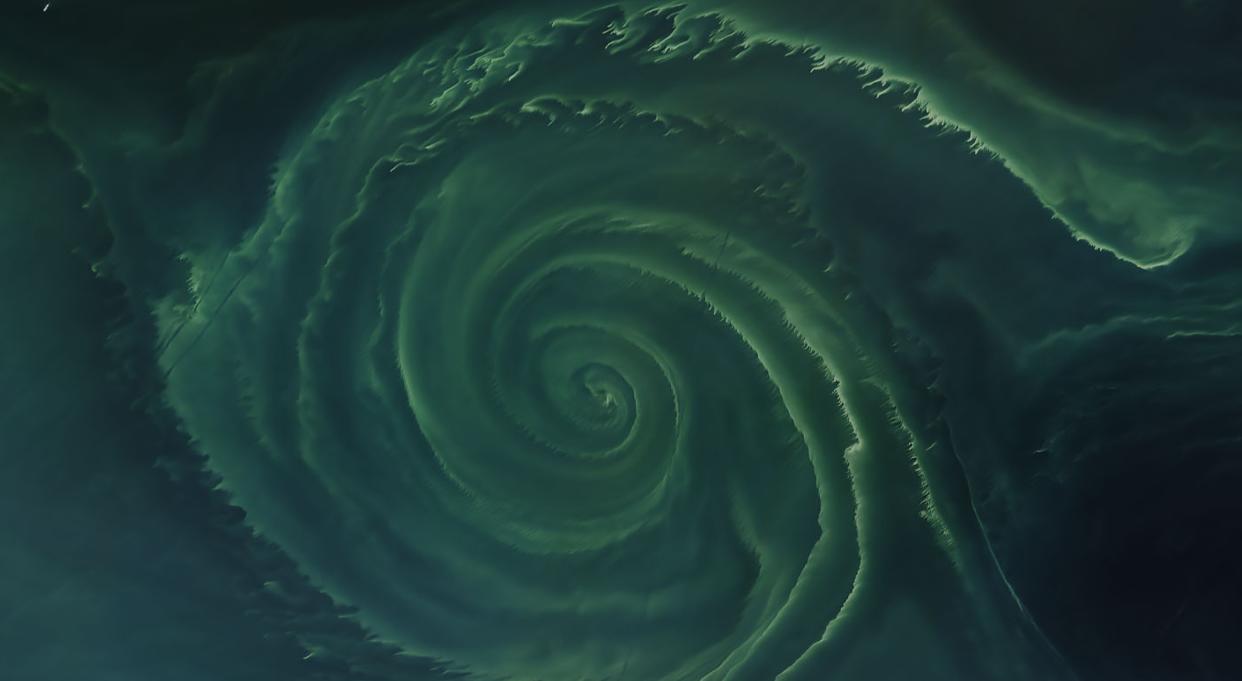NASA spots huge green ‘whirlpools’ on the ocean (and the reason is alarming)

NASA satellites have spotted what looks like a huge, green ‘whirlpool’ on the surface of the ocean – and it’s evidence of a dangerous trend.
Every summer, phytoplankton spread across the northern basins of the North Atlantic and Arctic Oceans, with blooms spanning hundreds and sometimes thousands of miles.
Blooms this summer off of Scandinavia seem to be particularly intense – and could be ‘strangling’ the ocean beneath.
On July 18, 2018, the Operational Land Imager (OLI) on Landsat 8 acquired a natural-color image of a swirling green phytoplankton bloom in the Gulf of Finland, a section of the Baltic Sea.
The Finnish Environment Institute (SYKE) has observed the recent bloom from the water and found it to be mostly cyanobacteria.
MOST POPULAR STORIES ON YAHOO UK TODAY
Blood Moon: How to watch the longest total lunar eclipse this century on Friday
Yahoo UK Pictures of the week: Roads, rides and royals
Why do people think the Blood Moon heralds the end of the world?
Shock brawl breaks out in MacDonald’s over ‘free soft drink’
Here’s the scientific reasons why British people can’t cope with the heatwave
In recent years, the proliferation of algae blooms in the Baltic Sea has led to the regular appearance of “dead zones” in the basin.
Phytoplankton and cyanobacteria consume the abundant nutrients in the Baltic (fueled largely by runoff from sewage and agriculture) and reproduce in such vast numbers that their growth and decay deplete the oxygen content of the water.
According to researchers from Finland’s University of Turku, the dead zone this year is estimated to span about 27,000 square miles.
A research team from Finland and Germany reported this month that oxygen levels in recent years in the Baltic Sea are at their lowest levels in the past 1500 years.
More frequent and massive blooms, combined with warming seas due to climate change, are making it harder for fish and other marine life to thrive in this basin.

 Yahoo News
Yahoo News 

